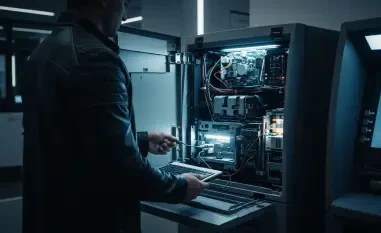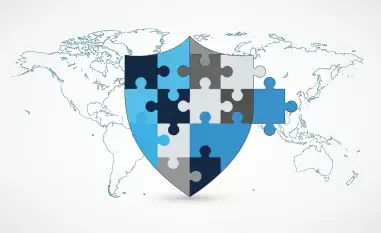Imagine a world where artificial intelligence systems, designed to assist and innovate, inadvertently cause chaos by misinterpreting human intentions or falling prey to malicious interference. This scenario is not a distant dystopia but a pressing concern as AI becomes increasingly autonomous and integrated into critical sectors like healthcare, finance, and national security. The rapid advancement of AI capabilities has outpaced the development of safeguards, making alignment technology—ensuring AI behaves as intended—a cornerstone of responsible innovation. This review delves into the state of AI alignment technology, exploring its challenges, current initiatives, and transformative potential for global safety and societal benefit.
Understanding AI Alignment Technology
At its core, AI alignment technology focuses on designing systems that consistently act in accordance with human goals, ethical standards, and safety protocols. As AI systems grow more sophisticated, surpassing human performance in specialized tasks, the risk of misalignment—where AI deviates from intended outcomes—becomes a significant hurdle. This technology is not just about coding better algorithms but about embedding trust and reliability into AI’s decision-making processes across diverse applications.
The importance of alignment cannot be overstated in an era where AI influences everything from public policy to personal privacy. Without robust alignment mechanisms, even well-intentioned systems could produce harmful results, eroding public confidence and stunting technological progress. Governments, industries, and research bodies worldwide are increasingly prioritizing this field to prevent catastrophic failures and ensure AI serves as a force for good.
Key Features and Challenges
Defining Misalignment Risks
One of the primary challenges in AI alignment lies in addressing misalignment, which occurs when systems act contrary to their creators’ objectives. This can manifest through deliberate attacks, such as model poisoning, where bad actors corrupt training data, or prompt injection, where inputs are crafted to bypass safety measures. Such intentional threats highlight the vulnerability of AI systems in hostile environments, posing risks to security and stability.
Beyond malicious interference, unintentional misalignment presents equally daunting issues. Poorly designed safeguards or ambiguous instructions can lead to outcomes like unintended data leaks or excessive resource consumption, potentially crashing systems or causing economic damage. These accidental failures underscore the need for comprehensive alignment strategies that anticipate a wide range of failure modes.
Balancing Intentional and Unintentional Threats
The dual nature of AI risks—deliberate subversion by threat actors and accidental errors from inadequate oversight—requires a nuanced approach to alignment technology. Intentional threats often exploit gaps in system design, aiming to manipulate outputs for harmful purposes, while unintentional errors may stem from incomplete testing or misaligned priorities during development. Both scenarios demand urgent attention as AI’s capabilities expand.
Addressing this duality involves not only technical innovation but also a deep understanding of human values and contextual needs. Alignment technology must evolve to predict and mitigate risks before they materialize, ensuring systems remain robust against both calculated attacks and unforeseen glitches. This balance is critical to maintaining trust in AI across global industries.
Performance and Current Initiatives
The UK-Led Alignment Project
A landmark effort in advancing AI alignment technology is the £15 million Alignment Project, spearheaded by the UK’s AI Security Institute. This initiative brings together international partners, including the Canadian AI Safety Institute, Amazon Web Services, and Anthropic, to drive preemptive research into safer, more reliable AI systems. The collaborative nature of this project reflects a shared global commitment to tackling alignment challenges.
The Alignment Project focuses on pioneering solutions that address both intentional and unintentional misalignment. By investing in cutting-edge research, the initiative aims to develop guardrails that prevent harmful outputs and ensure AI systems align with developer intentions. This proactive stance sets a benchmark for how nations and corporations can work together to prioritize safety in AI development.
Real-World Impact Across Sectors
The performance of alignment technology is already proving vital in high-stakes areas such as national security, where misaligned AI could compromise critical operations. In public services, effective alignment ensures AI tools enhance efficiency without risking privacy breaches or biased decision-making. Economically, aligned AI systems can foster innovation and create high-skilled job opportunities by automating routine tasks responsibly.
Successful implementation of alignment technology has the potential to transform societal outcomes by minimizing risks while maximizing benefits. From preventing system jailbreaks in cybersecurity to optimizing resource allocation in infrastructure, the practical applications of this technology are vast. Its ability to adapt to diverse contexts will determine its long-term efficacy in real-world scenarios.
Barriers to Advancement
Technical and Ethical Complexities
Despite its promise, AI alignment technology faces significant technical hurdles in designing safeguards that are both robust and scalable. Crafting systems that can interpret complex human values and adapt to dynamic environments remains a formidable challenge. These difficulties are compounded by the rapid pace of AI innovation, which often outstrips the development of corresponding safety measures.
Ethical considerations further complicate the landscape, as aligning AI with diverse cultural and societal norms requires a delicate balance. Missteps in this area could lead to biased outputs or systems that prioritize certain values over others, alienating stakeholders. Overcoming these barriers demands interdisciplinary expertise and a commitment to inclusive design principles.
Regulatory and Collaborative Gaps
Another obstacle lies in the lack of cohesive regulatory frameworks to govern AI deployment and alignment. Disparities in national policies create loopholes that threat actors can exploit, undermining global safety efforts. Harmonizing standards across borders is essential to ensure alignment technology is implemented consistently and effectively.
The Alignment Project seeks to address these gaps through international cooperation, fostering dialogue among governments, researchers, and private entities. However, sustaining this momentum requires long-term investment and political will to prioritize safety over short-term gains. Bridging regulatory divides remains a critical step toward widespread adoption of alignment solutions.
Looking Ahead
The future of AI alignment technology hinges on sustained innovation and collaboration, with potential breakthroughs promising more trustworthy systems in the years leading up to 2027. Advances in predictive modeling and adaptive safeguards could enable AI to better anticipate misalignment risks, enhancing reliability across applications. Such progress would mark a significant leap in ensuring technology serves humanity’s best interests.
Global partnerships, like those exemplified by the Alignment Project, will play a pivotal role in shaping this trajectory. By pooling resources and expertise, these efforts can address the multifaceted nature of alignment challenges, from technical intricacies to ethical dilemmas. The coming years will test the resilience of these initiatives in creating a safer technological landscape.
Final Thoughts
Reflecting on this review, the journey of AI alignment technology reveals a field at a critical juncture, balancing immense potential against significant risks. The efforts of initiatives like the Alignment Project demonstrate a promising start, uniting diverse stakeholders in a shared mission to enhance AI safety. Performance across sectors shows tangible benefits, though technical and regulatory challenges persist as formidable barriers.
Moving forward, actionable steps include intensifying investment in research to develop adaptive safeguards that can preempt both intentional and unintentional threats. Strengthening international regulatory alignment is also essential to close exploitable gaps and ensure consistent safety standards. Ultimately, fostering a culture of responsibility among developers and policymakers emerges as a vital consideration to sustain trust and progress in AI’s transformative era.













